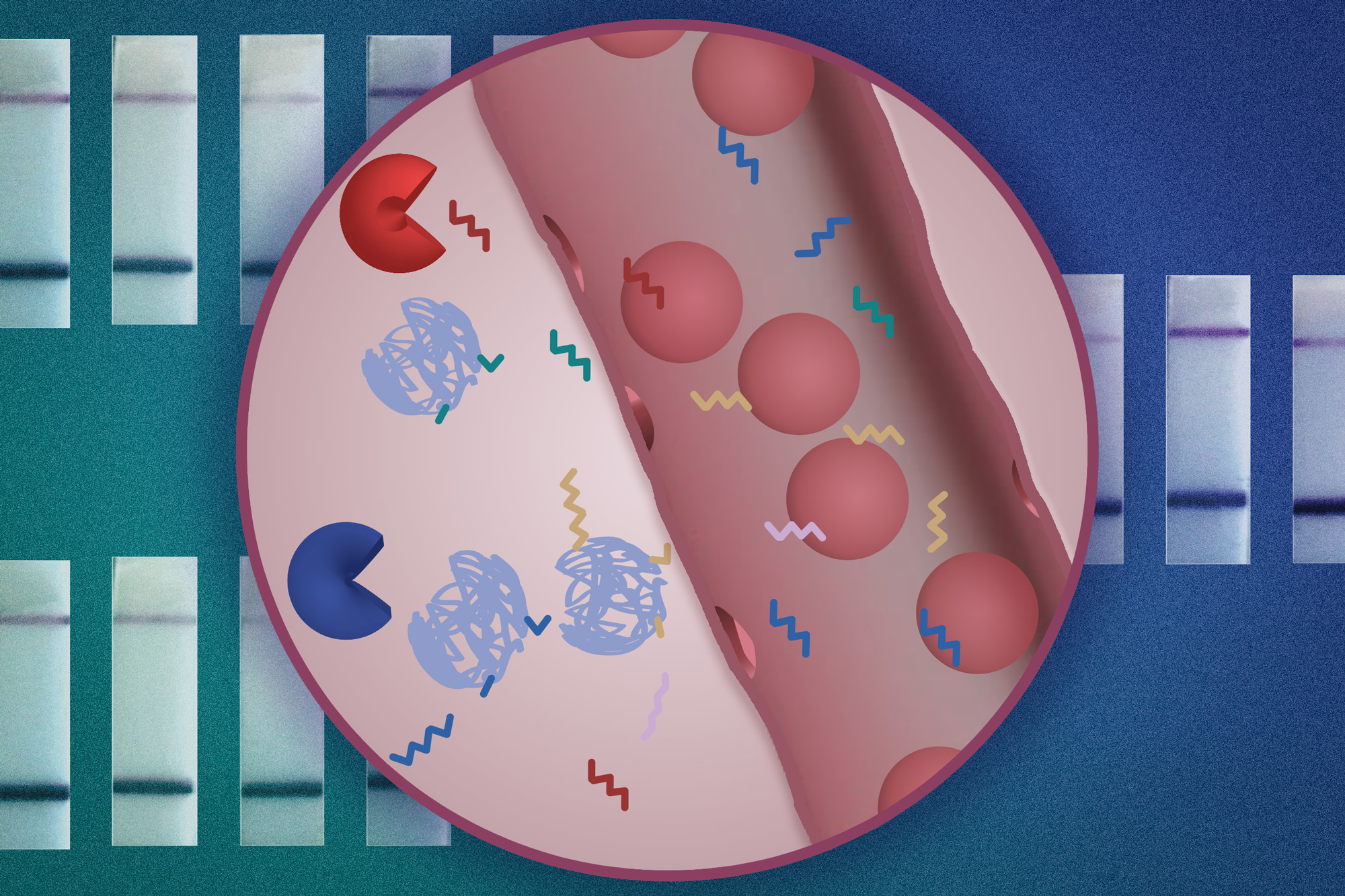A simple urine test for low-cost cancer diagnosis
The paper-based diagnostic, which can be read without sophisticated equipment, could also be designed to reveal whether a tumor has metastasized or recurred.

A nanoparticle sensor developed by Professor Sangeeta Bhatia, SM ’93, PhD ’97, and colleagues including former MIT postdoc Liangliang Hao, now an assistant professor at Boston University, could make it possible to detect and monitor cancers with an affordable paper-based urine test.
The nanoparticles are a variation on a type of “synthetic biomarker” developed in Bhatia’s lab that can produce a more easily detectable signal than the natural markers present in tiny quantities in people with cancer. When injected particles interact with enzymes that tumor cells produce, they shed specific sequences of DNA that are excreted in urine. Using CRISPR technology to analyze these DNA “bar codes” can point to distinguishing features of a particular patient’s tumor or reveal how well it is responding to treatment.
“Putting this diagnostic on paper is part of our goal of democratizing diagnostics and creating inexpensive technologies that can give you a fast answer at the point of care,” says Bhatia. In tests in mice, the researchers showed that they could accurately distinguish tumors that arose in the lungs from tumors formed by colorectal cancer cells that had metastasized to the lungs. They also showed that their approach could be scaled up to distinguish at least 46 DNA bar codes in a single sample.
Keep Reading
Most Popular
Large language models can do jaw-dropping things. But nobody knows exactly why.
And that's a problem. Figuring it out is one of the biggest scientific puzzles of our time and a crucial step towards controlling more powerful future models.
How scientists traced a mysterious covid case back to six toilets
When wastewater surveillance turns into a hunt for a single infected individual, the ethics get tricky.
The problem with plug-in hybrids? Their drivers.
Plug-in hybrids are often sold as a transition to EVs, but new data from Europe shows we’re still underestimating the emissions they produce.
Stay connected
Get the latest updates from
MIT Technology Review
Discover special offers, top stories, upcoming events, and more.